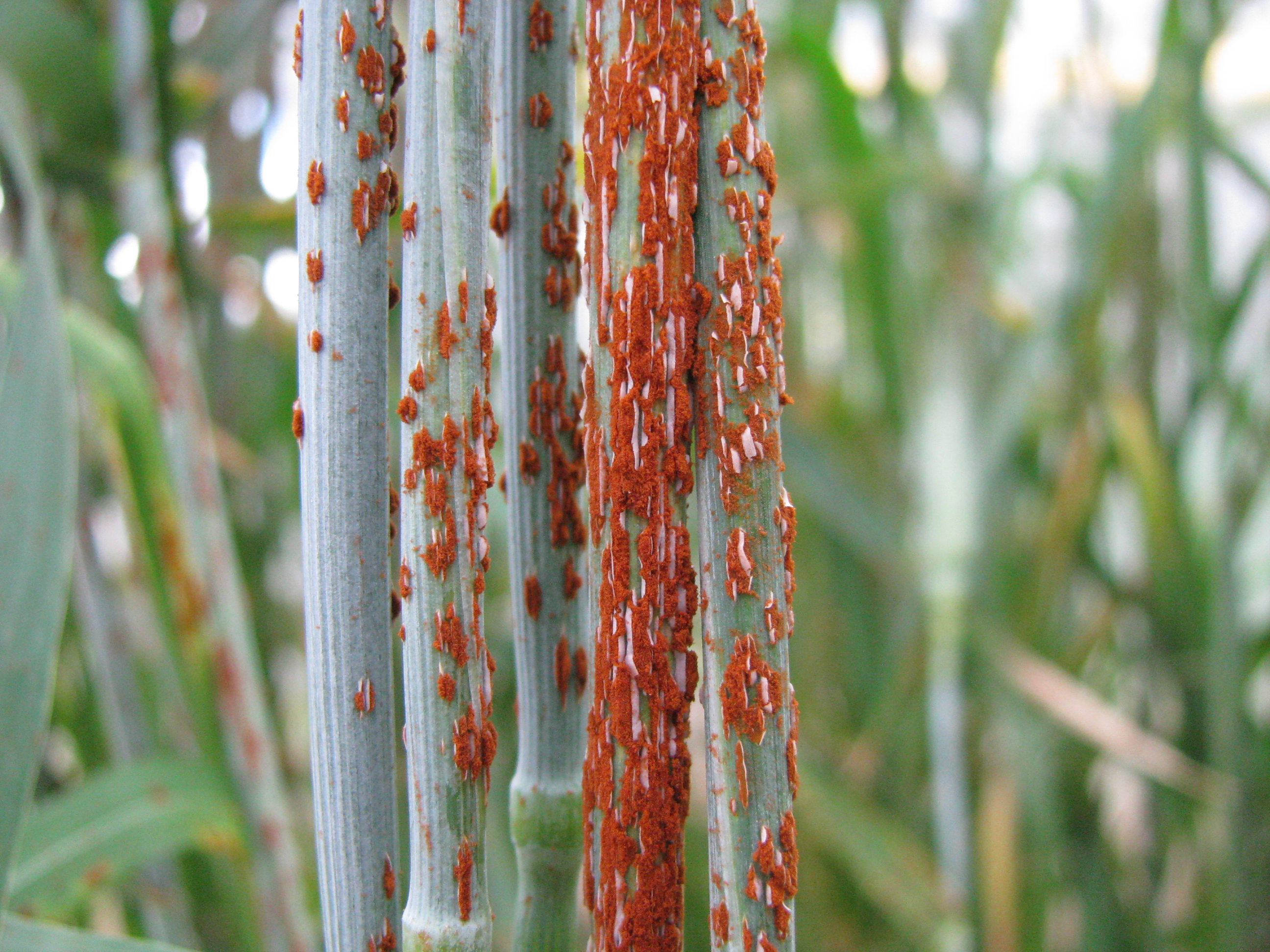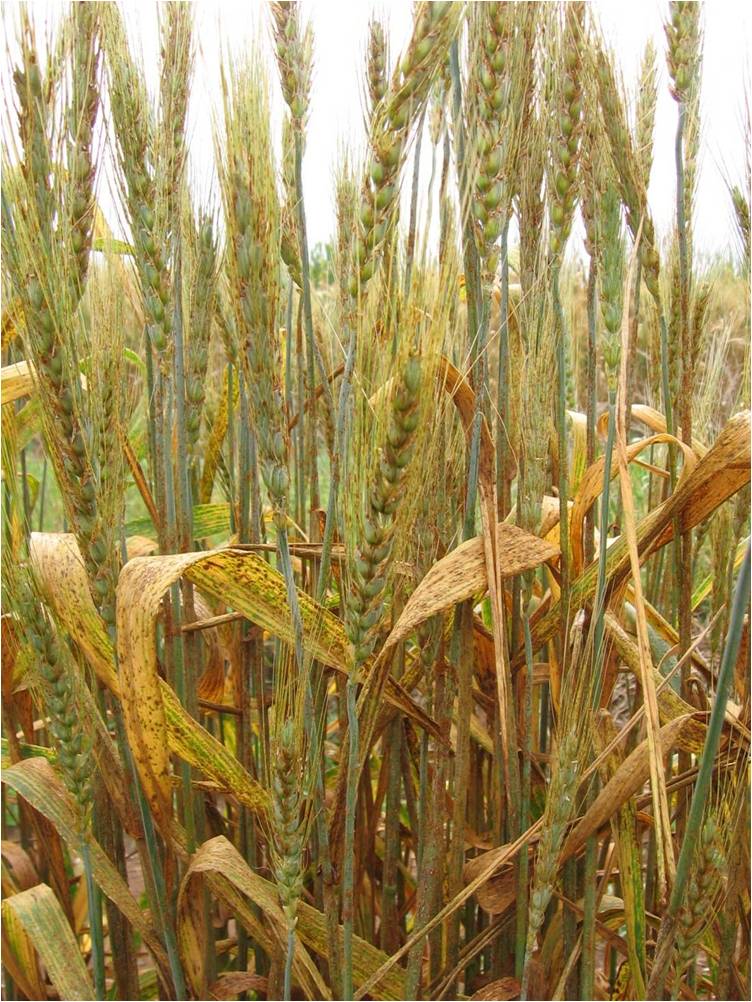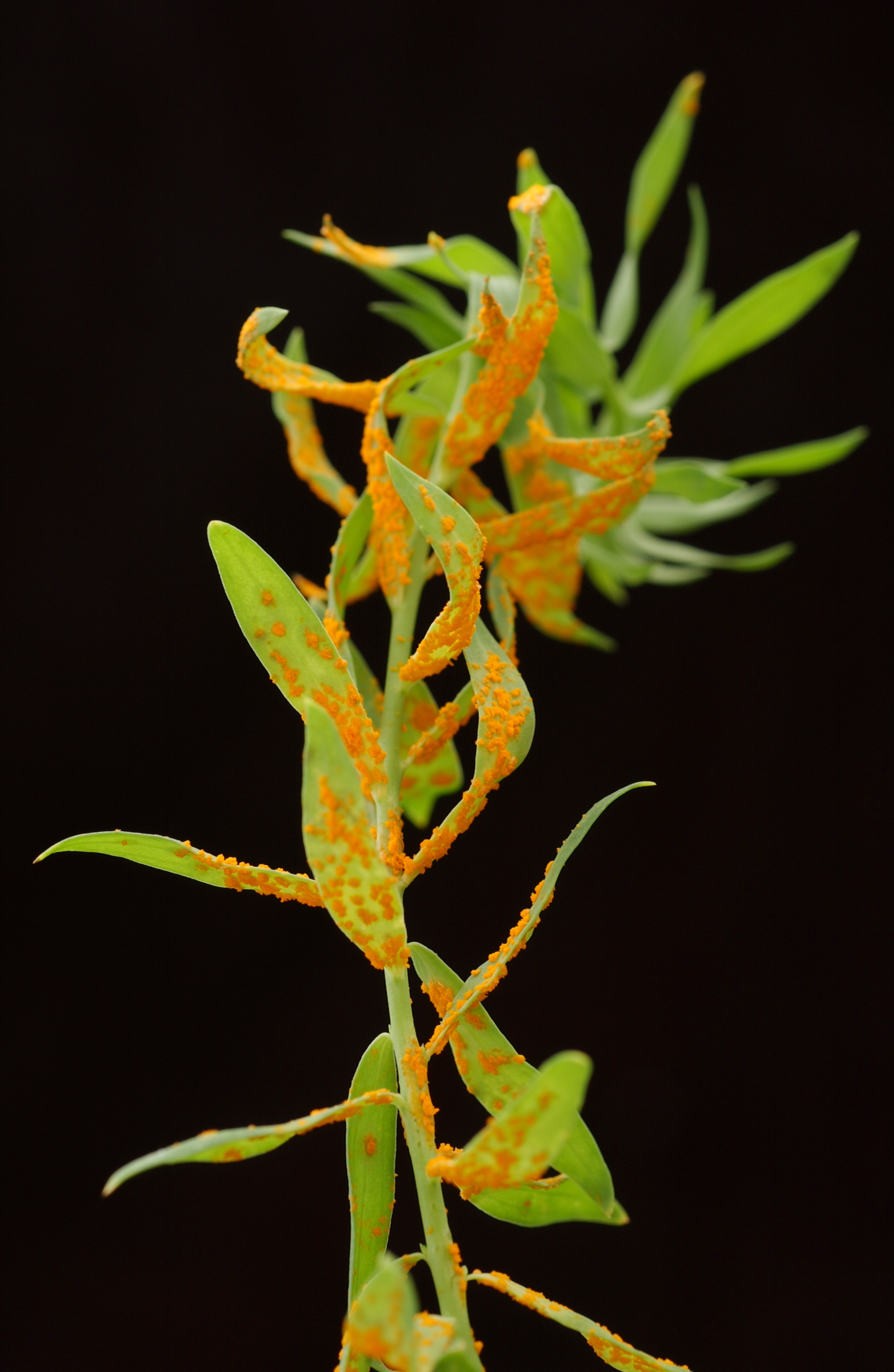The CSIRO rust research team is having a great month, their recent paper has appeared on the cover of Science and they have won the Borlaug Global Rust Initiative Gene Stewardship Award, which was presented to them today in India.

The recent Sr33 discovery graced the cover of Science this month.
Image: Evans Lagudah and Zak Pretorius
Rust is one of the most devastating wheat diseases currently threatening global wheat yields and, in the case of stem rust, can destroy entire wheat fields.
CSIRO researchers have been contributing to the global fight against rust for several decades. Their work has increased our understanding of the interaction between the rust pathogen and the plants it attacks, and provided the wheat industry with the means to breed rust resistance wheat.

Wheat in Africa infested with UG99 stem rust.
The Borlaug Global Rust Initiative (BGRI) is an international consortium that aims to systematically reduce the world’s vulnerability to stem, yellow, and leaf rusts of wheat. The BGRI’s Gene Stewardship Award is awarded to scientists who contribute to responsible management of genetic resources of wheat.
The CSIRO team and their Australian colleagues from the University of Sydney and the University of Adelaide, known as the Australian Cereal Rust Control Team, supported by the Grains Research and Development Corporation, were recognised for their ‘superlative efforts to combat wheat rust diseases’ at a ceremony held in India today.
Dr Sarah Evanega, associate director of the BGRI’s Durable Rust Resistance in Wheat project, and adjunct professor of plant breeding at Cornell University, said that the Australian team was an inspiration.
“So much great work is being done at these Australian institutions. Their expertise, their collaborative spirit and their recognition of the importance of developing durably resistant varieties serve as an inspiration for rust scientists all over the world,” she said.

Flax plant infected with rust pustules
Client: Mick Ayliffe
Location: Glasshouse, PI, Black Mountain, Canberra
Date: 23/07/2003
Photographer: Carl Davies
The team also study rust on flax to investigate how rust infects its victims.
On the home front, researchers say the key strategy for protecting the Australian wheat industry from going rusty is to combine different sources of resistance.
“Combining or stacking multiple resistance genes makes it very difficult for the pathogen to mutate and overcome the multiple sources of resistance,” explains CSIRO’s Dr Evans Lagudah.
“Once we’ve identified the resistance genes we can provide breeders with DNA markers they can use to select varieties with different resistance genes to cross, producing a wheat variety that contains not just one or two but multiple resistance genes.”
The recent discovery of the Sr33 stem rust resistance gene, which graced the front cover of Science this month, was a great achievement adding not only another layer of protection but also deepening our understanding of the molecular nature of resistance.
These achievements are the latest in a long line of discoveries and science highlights from the rust research team.
* * *
Media: Mikayla Keen Email: Mikayla.keen@csiro.au
Phone: +61 2 9490 8448 Mobile: 0467 788 023

